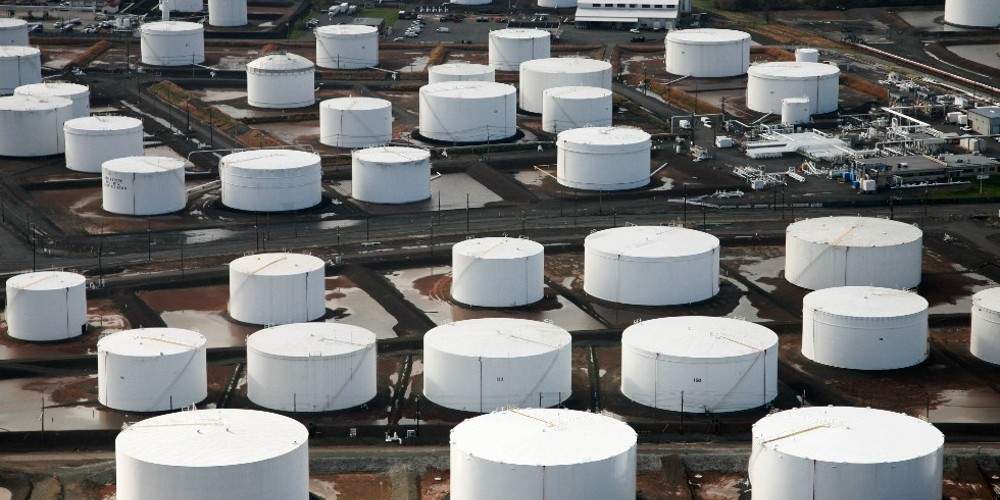Self-inflicted wounds create teachable moments, but the architects of America’s current energy crisis are learning all the wrong lessons.
Skyrocketing energy costs are one of America’s harsh post-Covid realities. And with one in four American households struggling to pay for their energy needs before Covid, policymakers should have set their sights on making energy more affordable for more Americans.
Instead, as Joseph Toomey points out in his new report RealClearEnergy report, Energy Inflation Was by Design, policymakers squeezed supply everywhere they could, so it would become impossible to meet demand.
From the beginning, the Biden administration has prioritized restricting access to the fuels that power nearly 80% of America’s economy and roughly three-quarters of American homes. Revoking permits for the long-embattled Keystone XL Pipeline was one of President Biden’s first executive orders, making it harder and more dangerous to transport Canadian fossil fuels to American refineries. This decision was all the more hypocritical when, weeks later, President Biden gave his approval of Russia’s Nord Stream 2 pipeline to Germany.
In a like manner, the Biden administration is helping speed up the closure of the refineries that turn oil into gasoline. Escalating biofuel mandates are signaling to refineries to close up shop, as blending levels are reaching unsustainably high levels. Moreover, the Environmental Protection Agency’s (EPA’s) revoking of biofuel waivers for small refineries will only cause more refining capacity to buckle under those mandates’ costly weight. Gasoline and diesel refining capacity has been declining for decades, and is in no position to reverse course.
The Biden administration is simultaneously cracking down on drilling for the fuels that power everyday life. One quarter of America’s oil and gas is produced from federal property by way of leasing drilling rights to companies. However, the Biden administration recently cut onshore drilling leases by 80%, as well as notably curtailing offshore drilling. For the leases that were not cut, the Interior Department significantly increased royalty fees, making federal lands a less attractive drilling option, as well as allowing lawsuits to delay several already-purchased leases based on environmentally and economically squishy climate change metrics.
On private lands the situation is no different, as the EPA is attempting to regulate oil and gas drilling out of business. The EPA lacks the authority to ban fracking on private lands, but is considering using burdensome ozone standards to stifle drilling in the Permian Basin. The Permian Basin in Texas and New Mexico is America’s most productive oil and gas field, accounting for 40% of America’s oil production and 20% of its natural gas supply. Taking the end use of these products into consideration, the EPA’s rules could jeopardize 25% of the country’s gasoline supply.
The Biden administration’s more stringent power plant regulations would prove deleterious to grid stability, too. Several of the nation’s power grid operators have opposed the EPA’s proposed aggressive power plant regulations, as forcing reliable fossil fuel generation out of service invites risks to grid stability. In fact, grid operators have pushed for keeping soon-to-be-retired coal plants operating longer for this very reason.
Nor is the pressure resulting from a staunch campaign against fossil fuels limited to domestic policy. Rather than increasing American oil production, President Biden has, hat in hand, approached Venezuela and OPEC with the goal of boosting oil production. Despite the stated goal of curbing fossil fuel production being reducing CO2 emissions, these policies overlook the role that American-made fossil fuels have to play in reducing global CO2 emissions. American oil and gas has lower lifecycle emissions than top competitors, and boosting exports can enrich Americans while draining dictators’ war chests.
In its latest move, the Biden administration is resorting again to draining the Strategic Petroleum Reserve, this time to its lowest level in 40 years, in a last-ditch effort to lower gasoline prices before the November election. Periodically releasing oil from the country’s strategic reserves to score political points is not an energy policy strategy, especially when that oil ends up in China.
The international embarrassment and domestic hardship resulting from the Biden administration’s decisions should be a clue to change course, but learning the right lesson is not on the syllabus for the policymakers responsible. As Toomey points out in his report, creating a hostile policy environment that leads to the ending of fossil fuels is the real motive behind the web of energy policies the Biden administration is spinning.
Indeed, Marlo Lewis also confirms all of this on RealClearEnergy: the disastrous outcomes of these rushed climate policies are a feature of the system, not a bug.
Jakob Puckett is an energy analyst.
What Would You Do If Pharmacies Couldn’t Provide You With Crucial Medications or Antibiotics?
The medication supply chain from China and India is more fragile than ever since Covid. The US is not equipped to handle our pharmaceutical needs. We’ve already seen shortages with antibiotics and other medications in recent months and pharmaceutical challenges are becoming more frequent today.
Our partners at Jase Medical offer a simple solution for Americans to be prepared in case things go south. Their “Jase Case” gives Americans emergency antibiotics they can store away while their “Jase Daily” offers a wide array of prescription drugs to treat the ailments most common to Americans.
They do this through a process that embraces medical freedom. Their secure online form allows board-certified physicians to prescribe the needed drugs. They are then delivered directly to the customer from their pharmacy network. The physicians are available to answer treatment related questions.


